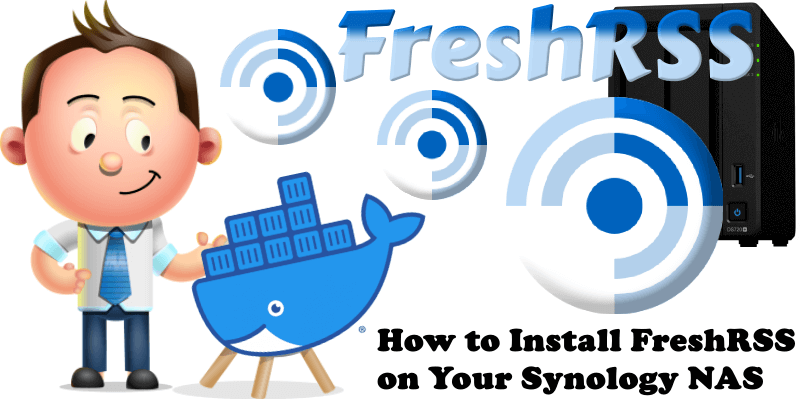
FreshRSS is a free, self-hostable aggregator for RSS feeds. You can easily read your RSS feeds on your mobile without requiring any third-party application. With FreshRSS you can manage +100k articles without speed performance complaints. Your data is yours! Host your aggregator on your Synology NAS and do not depend on anyone. In this step by step guide I will show you how to install FreshRSS on your Synology NAS using Docker.
STEP 1
Please Support My Work by Making a Donation.
STEP 2
Install Container Manager via Synology “Package Center”. If you run an older DSM version (under 7.2), search for Docker instead of Container Manager.
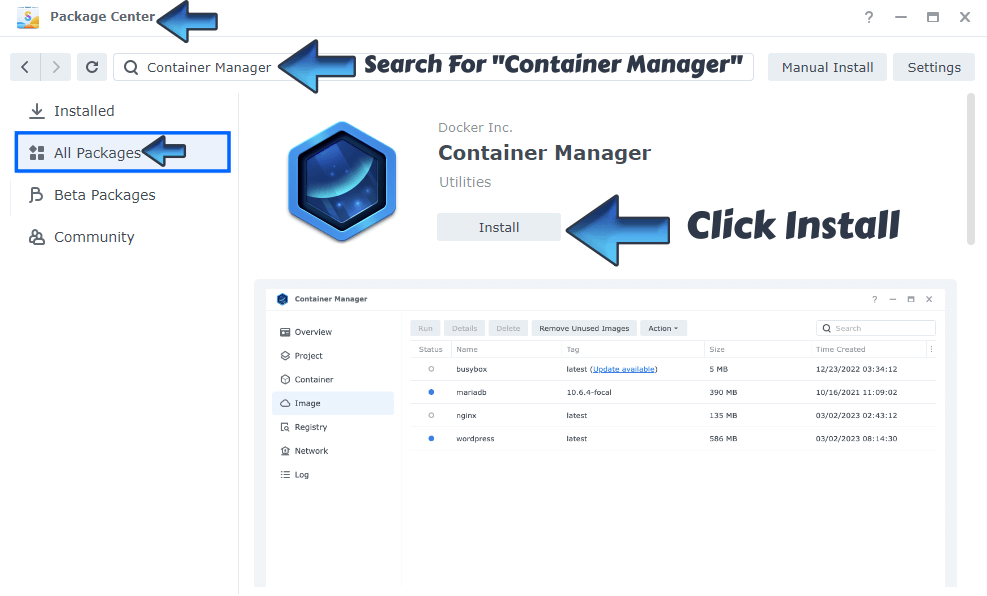
STEP 3
Go to File Station and open the docker folder. Inside the docker folder, create one new folder and name it freshrss. Follow the instructions in the image below.
Note: Be careful to enter only lowercase, not uppercase letters.
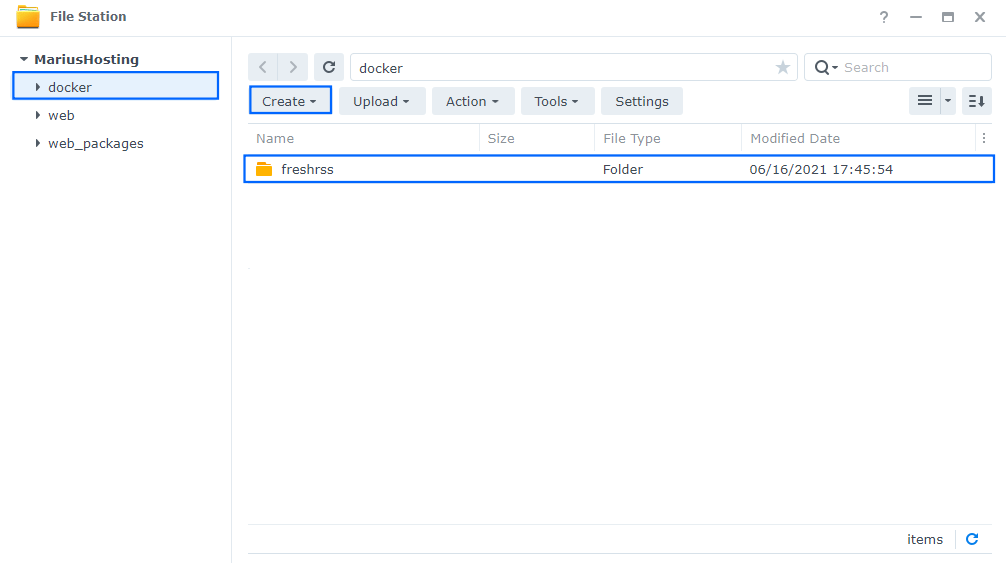
STEP 4
Go to Control Panel / Task Scheduler / Create / Scheduled Task / User-defined script. Follow the instructions in the image below.
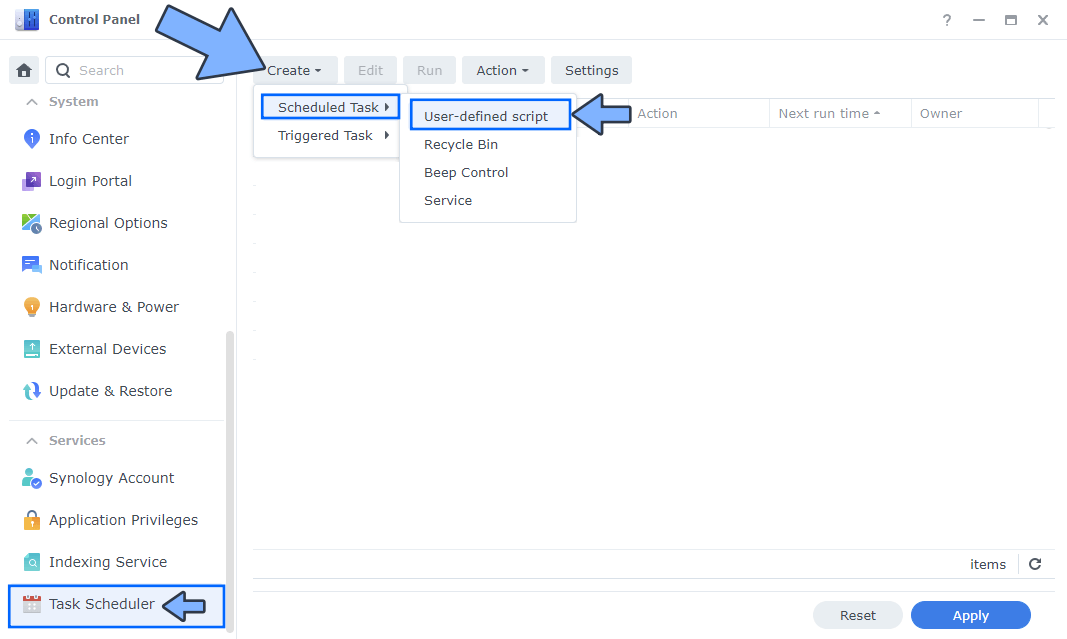
STEP 5
Once you click on User-defined script, a new window will open. Follow the instructions below:
- General: In the Task field type in “Install FreshRSS“. Uncheck the “Enabled” option. Select root User.
- Schedule: Select Run on the following date then select “Do not repeat“.
- Task Settings: Check “Send run details by email“, add your email then copy paste the code below in the Run command area. After that, click OK.
docker run -d --name=freshrss \ -p 9009:80 \ -e PUID=1026 \ -e PGID=100 \ -e TZ=Europe/Bucharest \ -v /volume1/docker/freshrss:/config \ --restart always \ ghcr.io/linuxserver/freshrss
Note: Before you paste the code above in the Run command area, change the value numbers for PUID and PGID with your own values. (Follow my step by step guide on how to do this.)
Note: Before you paste the code above in the Run command area, change the value for TZ. (Select your current Time Zone from this list.)
Note: If you have your docker folder in a different volume, then change /volume1/docker/freshrss according to your settings. For example: /volume2/docker/freshrss or /volume3/docker/freshrss etc.
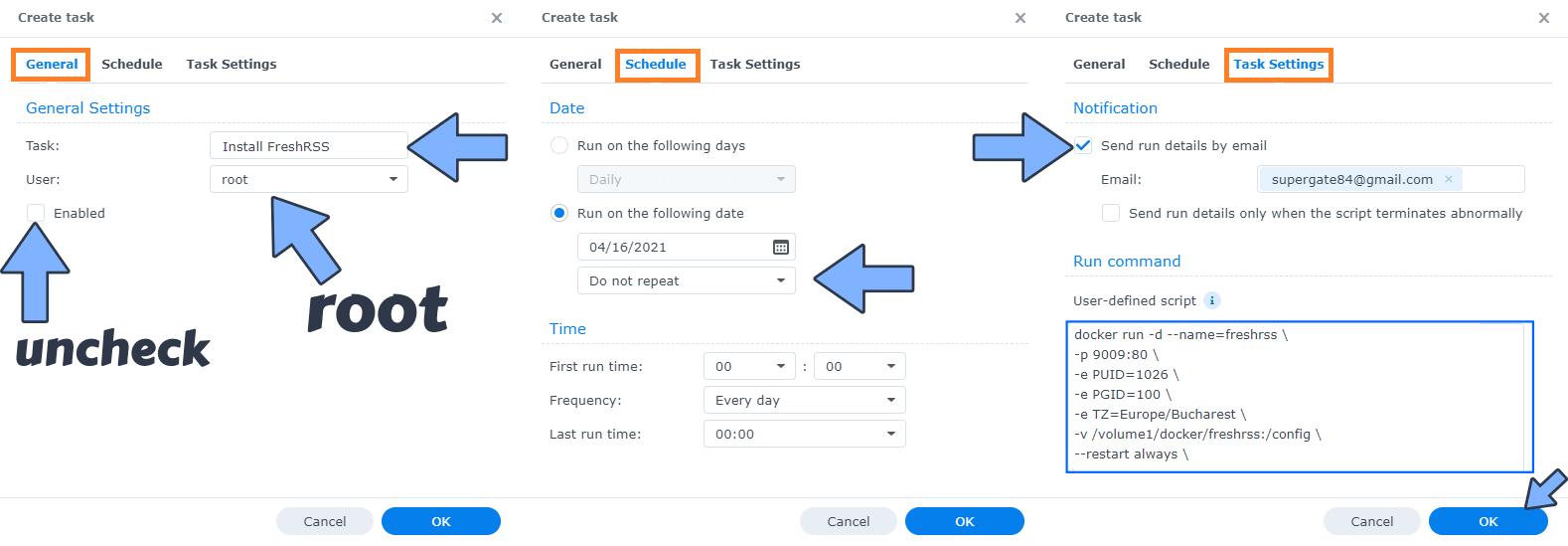
STEP 6
After you click OK on STEP 5 a new warning pop up window will open. Click OK.
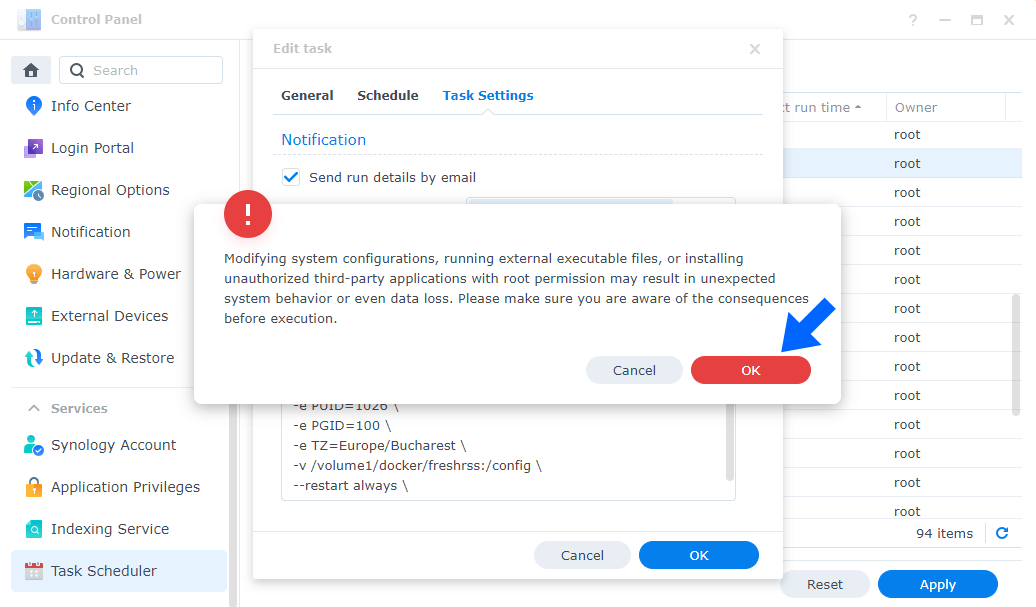
After you click OK, type in your DSM Password then click Submit. Follow the instructions in the image below.

STEP 7
After you click Submit on STEP 6, select your “Install FreshRSS” Task then click the “Run” tab. You will be asked to run Install FreshRSS – click OK. Follow the instructions in the image below.

STEP 8
🟢Please Support My work by Making a Donation. Almost 99,9% of the people that install something using my guides forget to support my work, or just ignore STEP 1. I’ve been very honest about this aspect of my work since the beginning: I don’t run any ADS, I don’t require subscriptions, paid or otherwise, I don’t collect IPs, emails, and I don’t have any referral links from Amazon or other merchants. I also don’t have any POP-UPs or COOKIES. I have repeatedly been told over the years how much I have contributed to the community. It’s something I love doing and have been honest about my passion since the beginning. But I also Need The Community to Support me Back to be able to continue doing this work.
STEP 9
The installation process can take up to a few seconds/minutes. It will depend on your Internet speed connection. Now open your browser and type in http://Synology-ip-address:9009 If everything goes right, you will see the FreshRSS Installation page. Select your Language then click Submit. Follow the instructions in the image below.
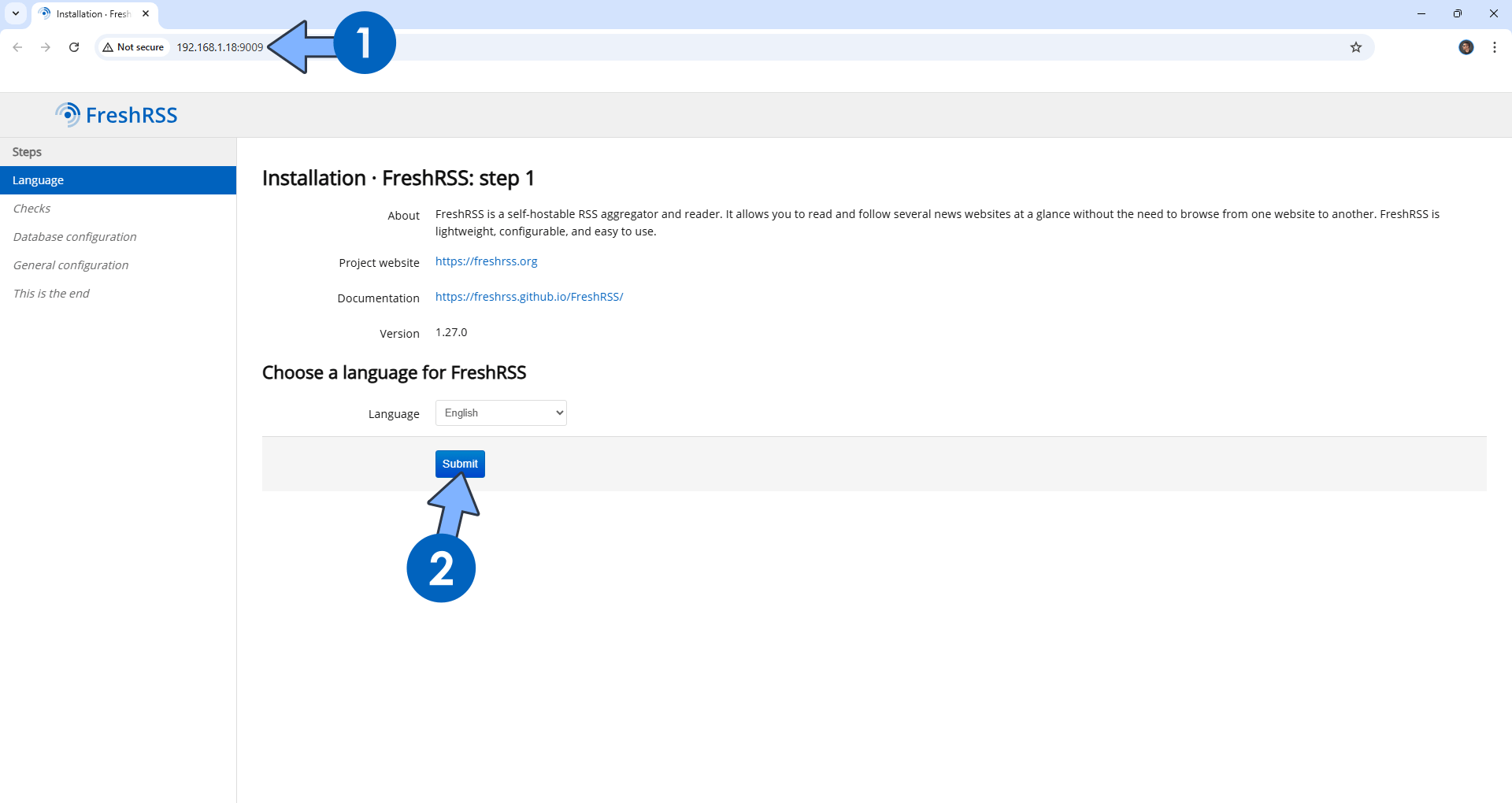
STEP 10
Wait for the Checks. Click Go to the next step. Follow the instructions in the image below.

STEP 11
Select SQLite as database, then click Submit. Follow the instructions in the image below.
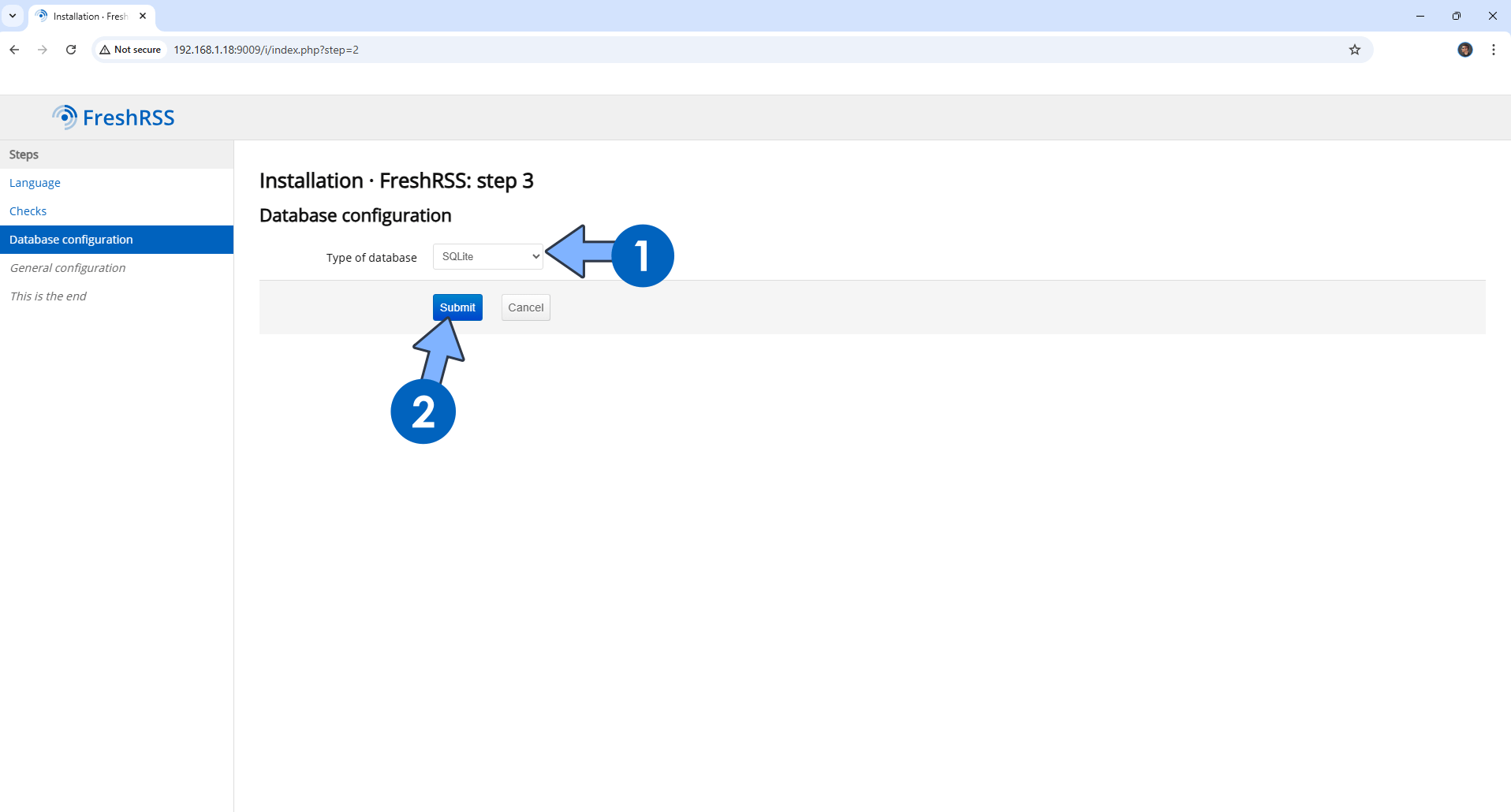
STEP 12
Choose your own username and password for the database. Click Submit. Follow the instructions in the image below.

STEP 13
Click Complete installation. Follow the instructions in the image below.
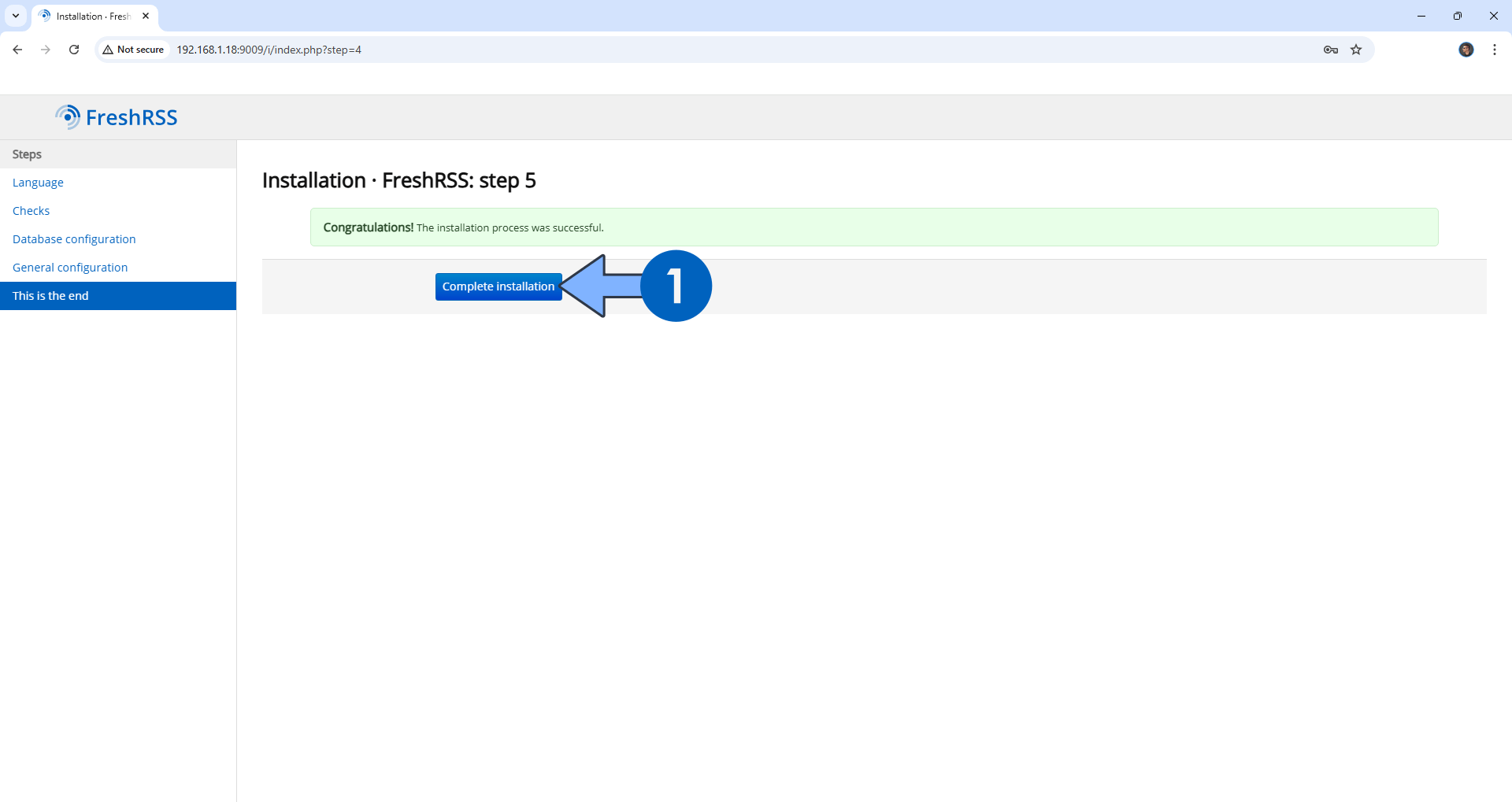
STEP 14
Log in with the Username and Password you have previously created at STEP 12. Follow the instructions in the image below.
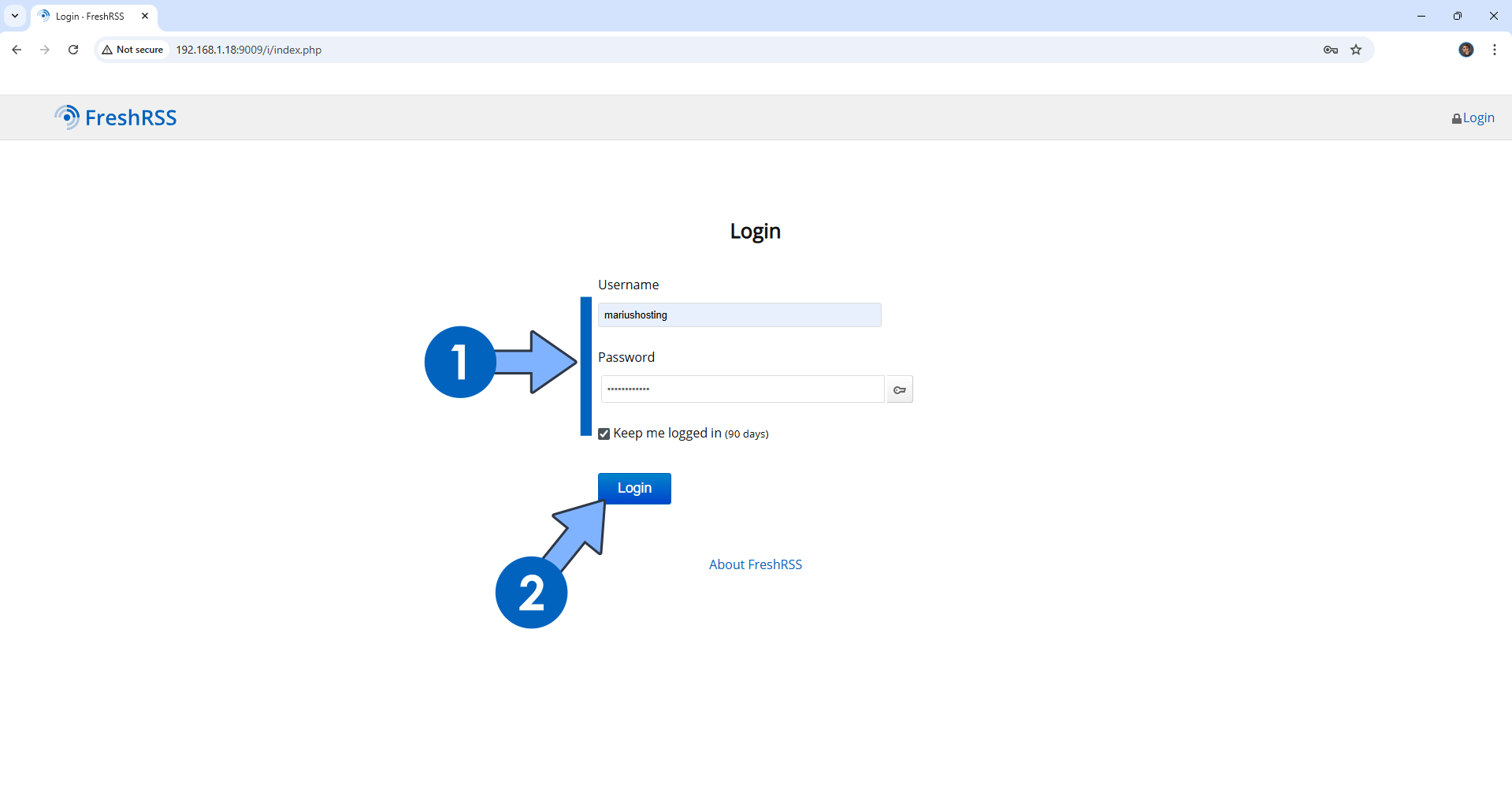
STEP 15
At the top of the page, click on the gear icon then Display. Follow the instructions in the image page.
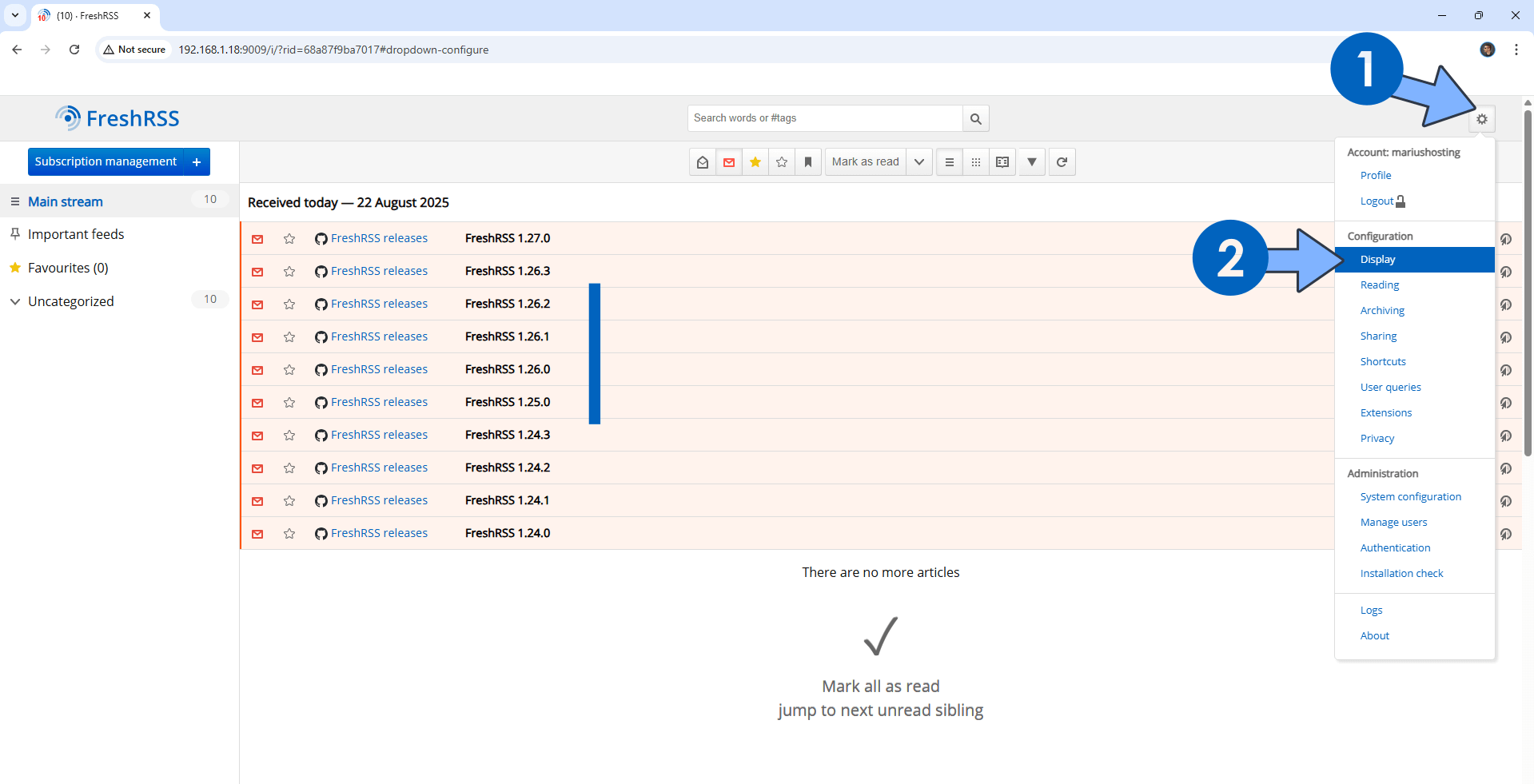
Select your favorite theme. I have chosen the “Nord Theme” because it’s a Dark Mode theme like the “Dark Pink” theme. Follow the instructions in the image below.
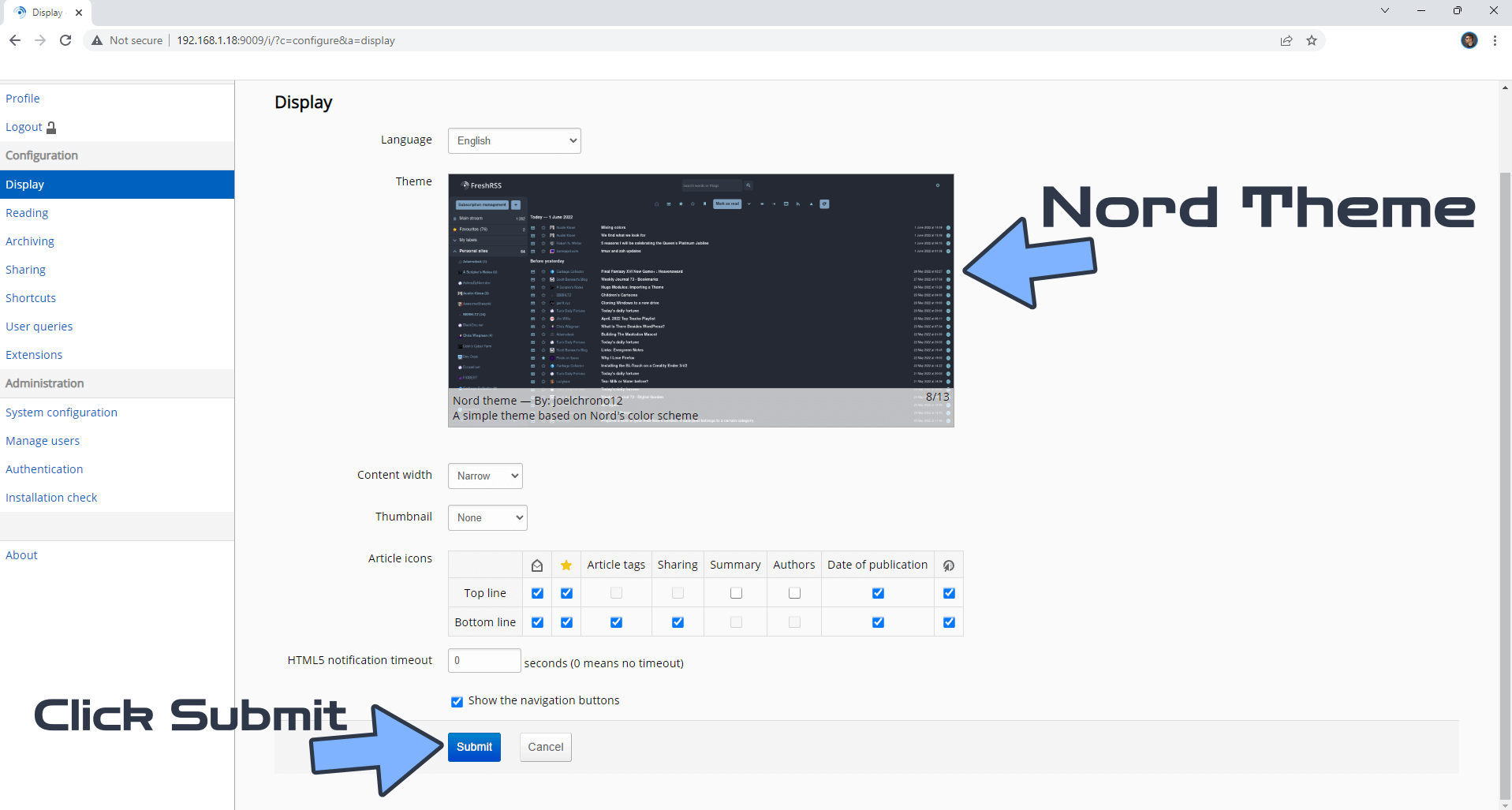
Enjoy your FreshRSS with the Nord Theme!

STEP 16
On the left sidebar, click Subscription management to add your first RSS feed link.

Enjoy your FreshRSS with the Dark Pink Theme!
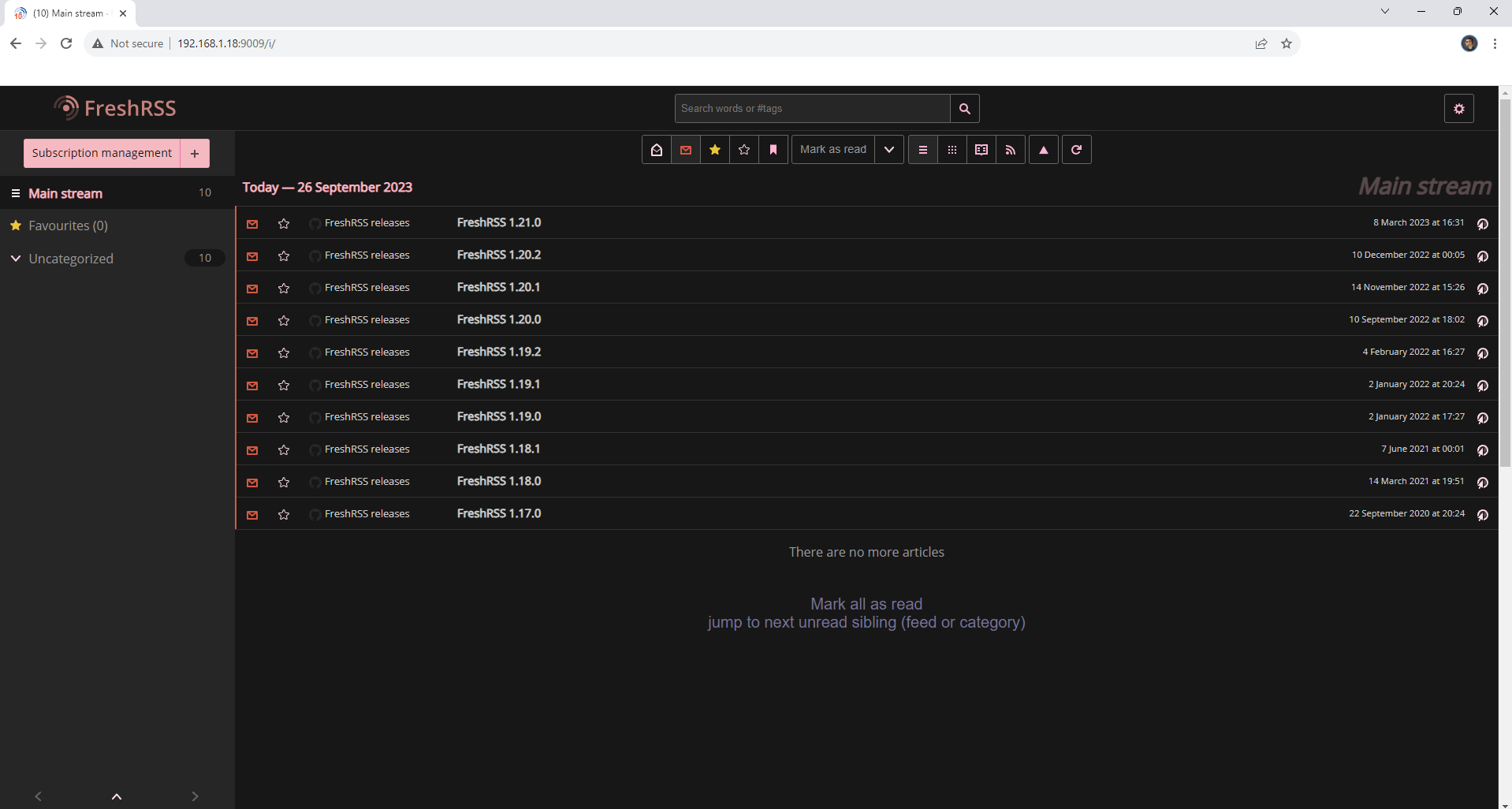
Note: If you want to run the FreshRSS container over HTTPS, check out my guide on How to Run Docker Containers Over HTTPS.
Note: Find out how to update the FreshRSS container with the latest image.
Note: How to Back Up Docker Containers on your Synology NAS.
Note: Can I run Docker on my Synology NAS? See the supported models.
Note: How to Free Disk Space on Your NAS if You Run Docker.
Note: How to Schedule Start & Stop For Docker Containers.
Note: How to Activate Email Notifications.
Note: How to Add Access Control Profile on Your NAS.
Note: How to Change Docker Containers Restart Policy.
Note: How to Use Docker Containers With VPN.
Note: Convert Docker Run Into Docker Compose.
Note: How to Clean Docker.
Note: How to Clean Docker Automatically.
Note: Best Practices When Using Docker and DDNS.
Note: Some Docker Containers Need WebSocket.
Note: Find out the Best NAS Models For Docker.
Note: Activate Gmail SMTP For Docker Containers.
This post was updated on Friday / October 31st, 2025 at 2:25 PM
